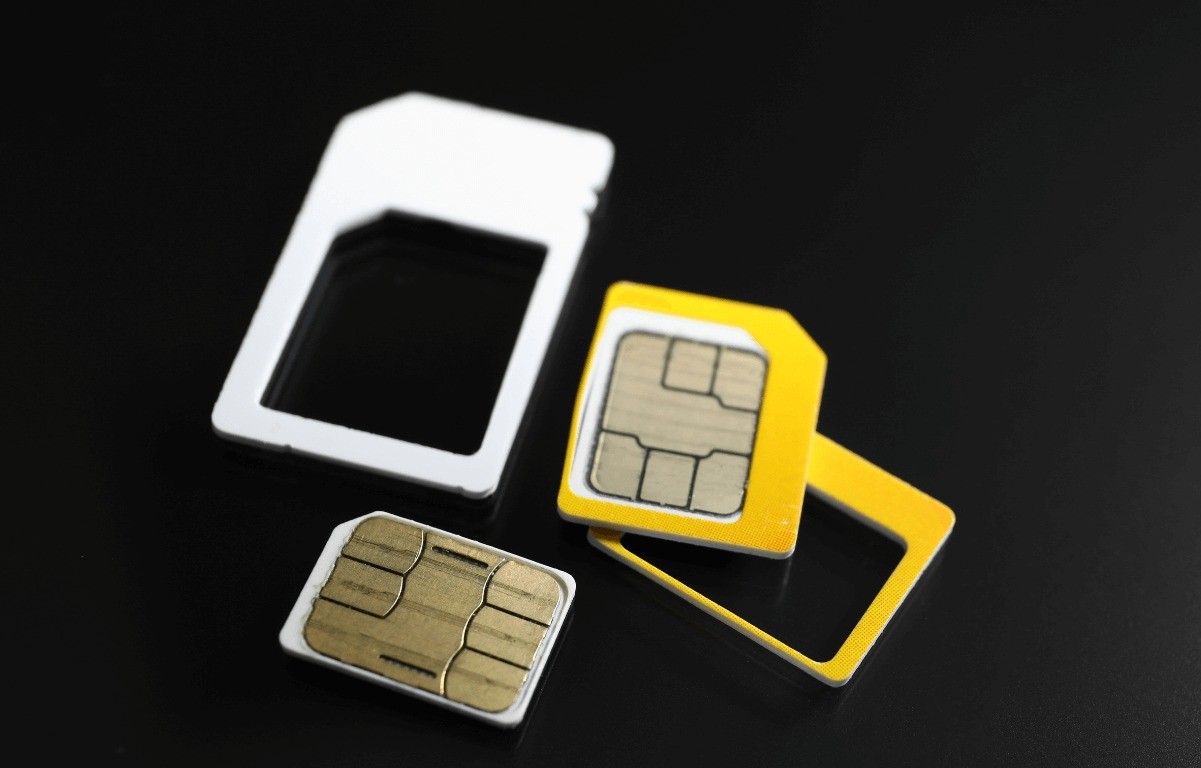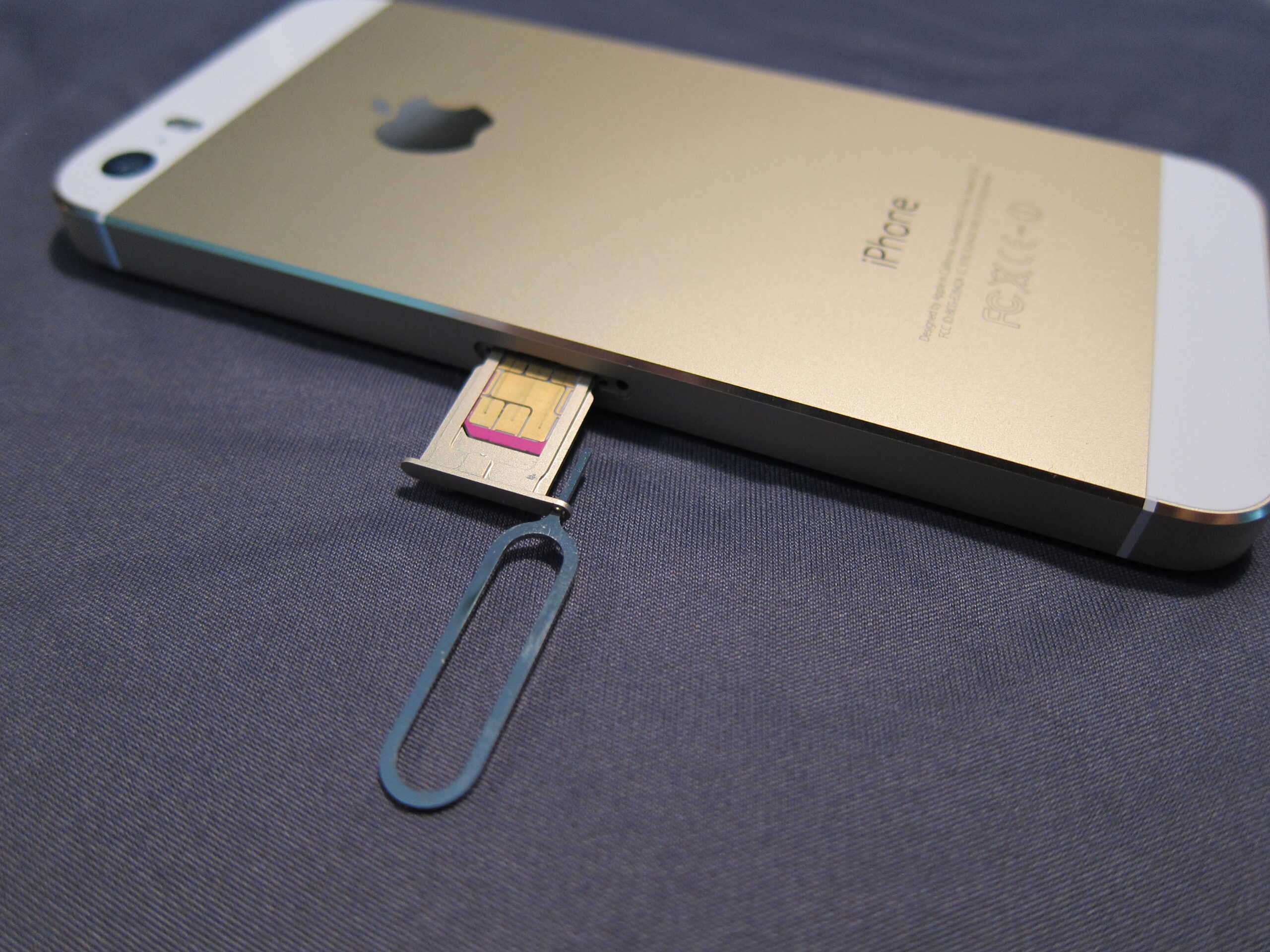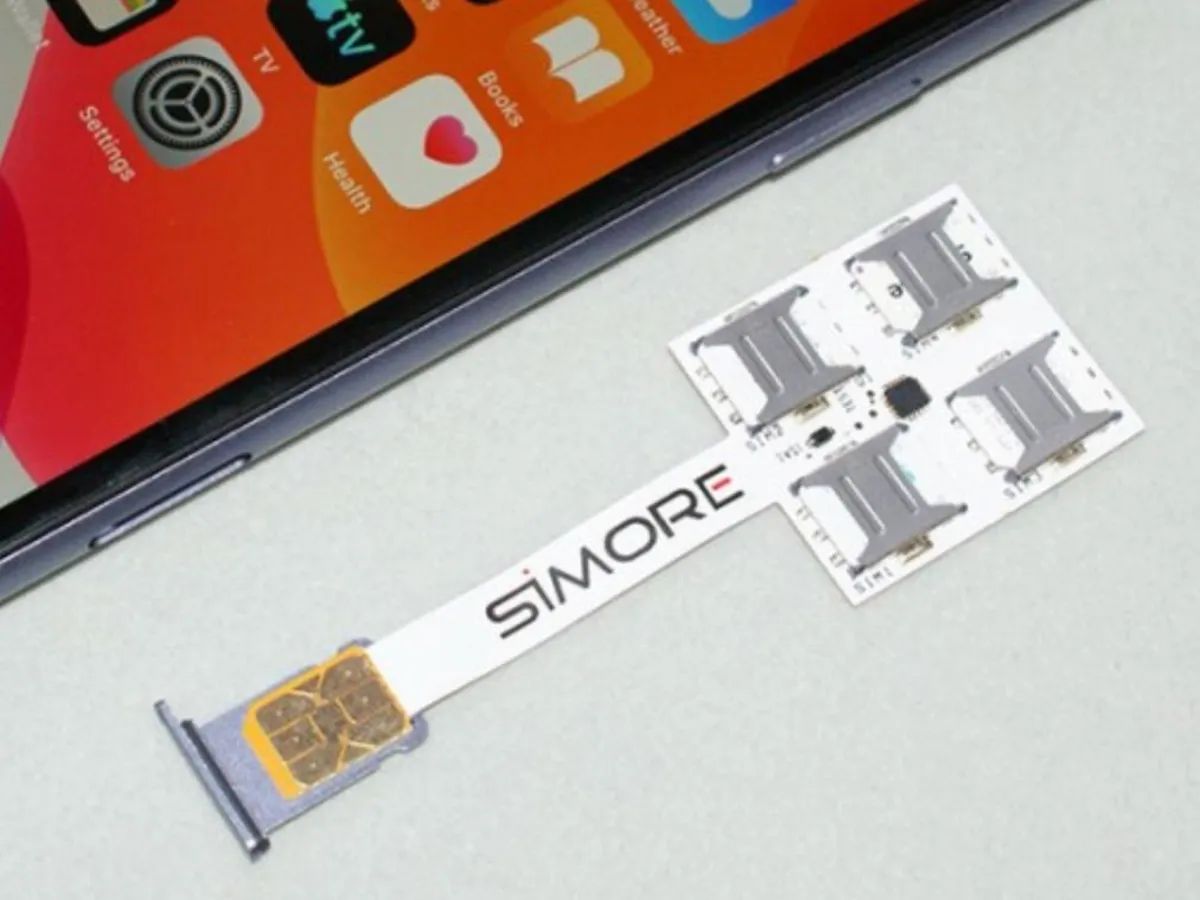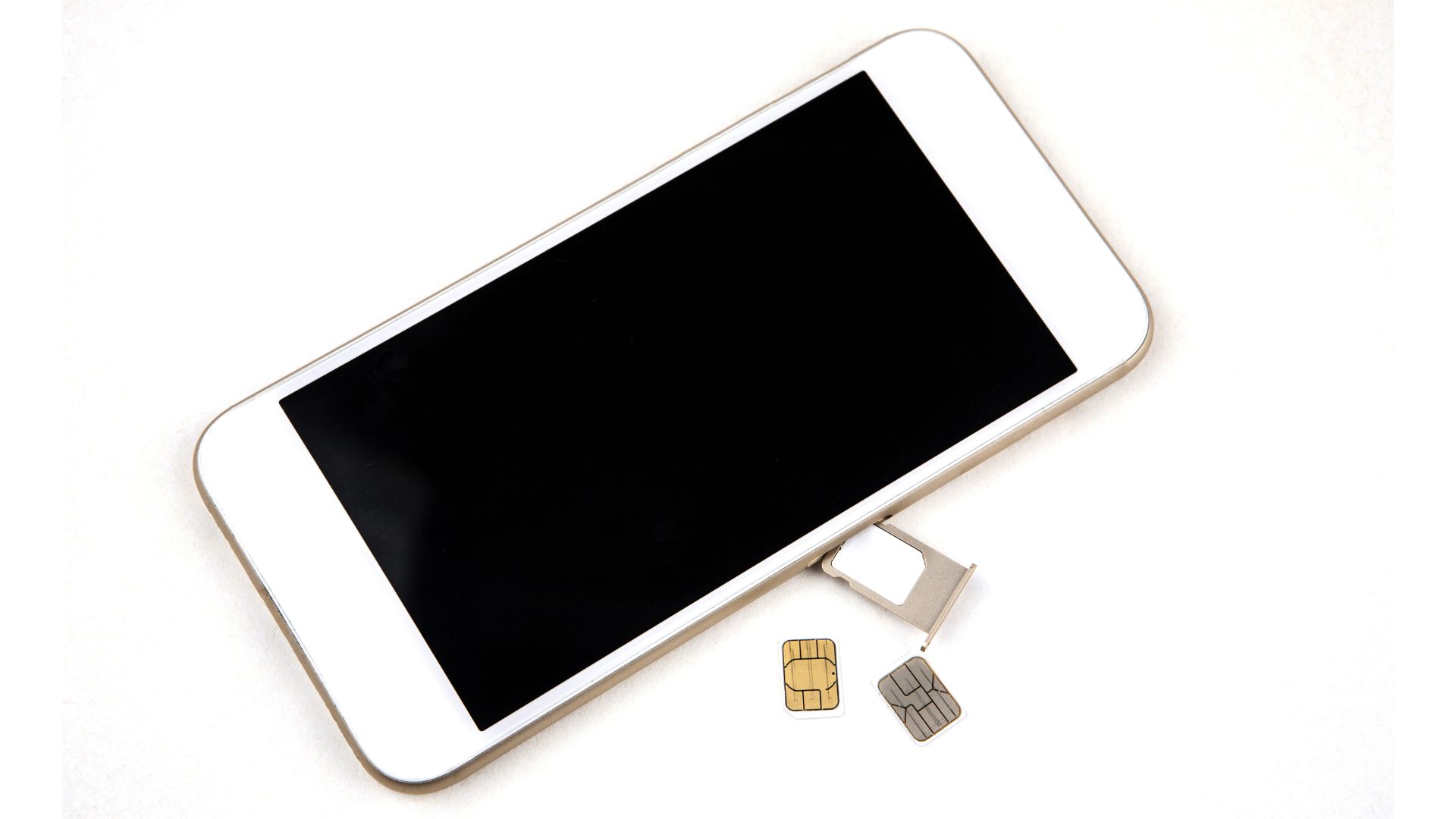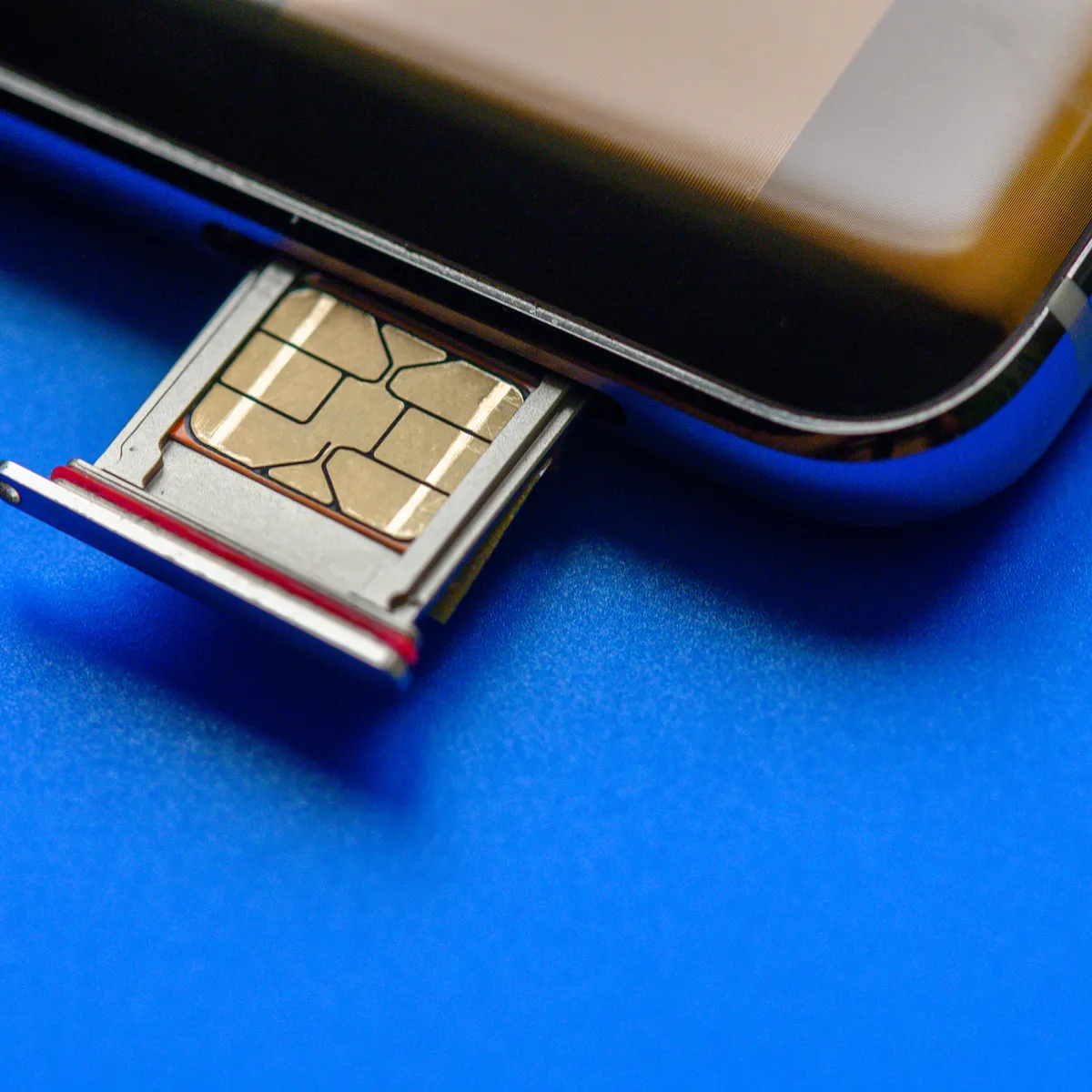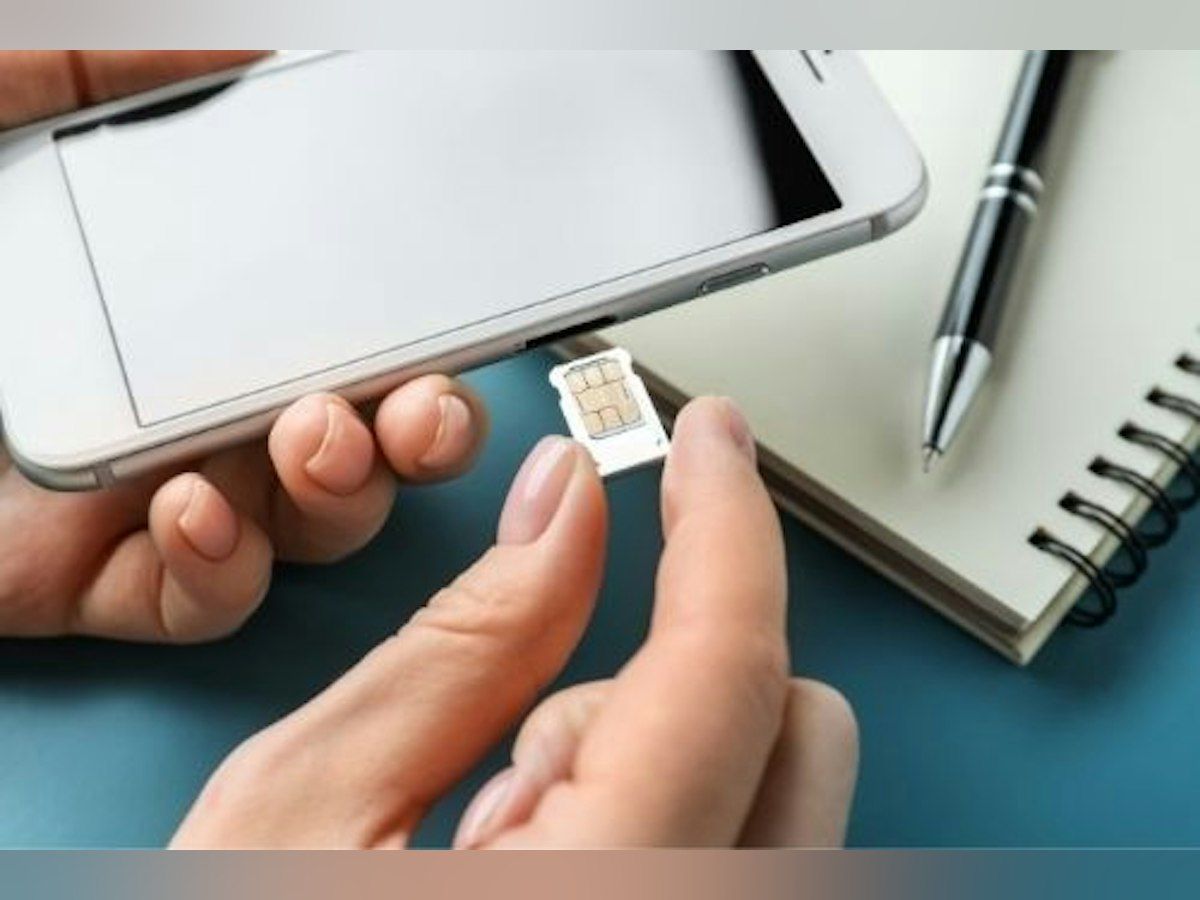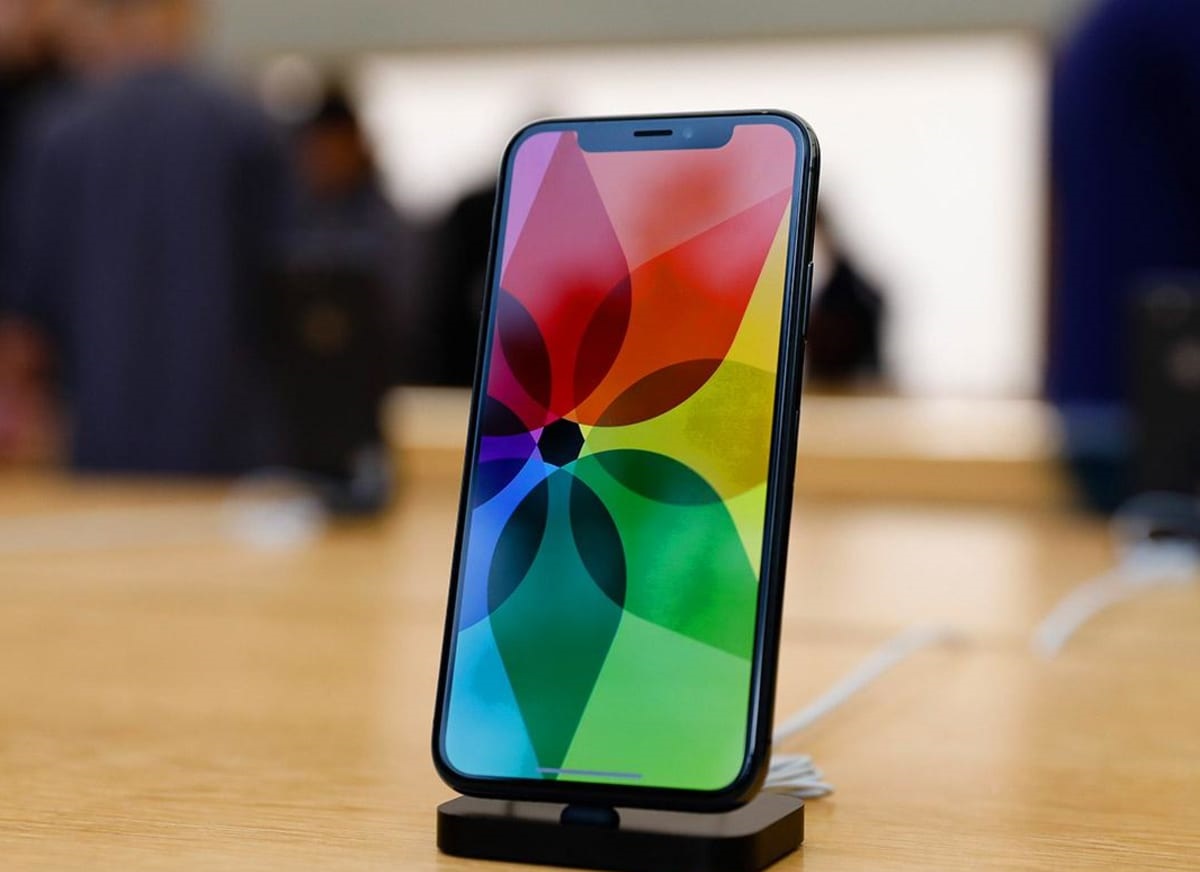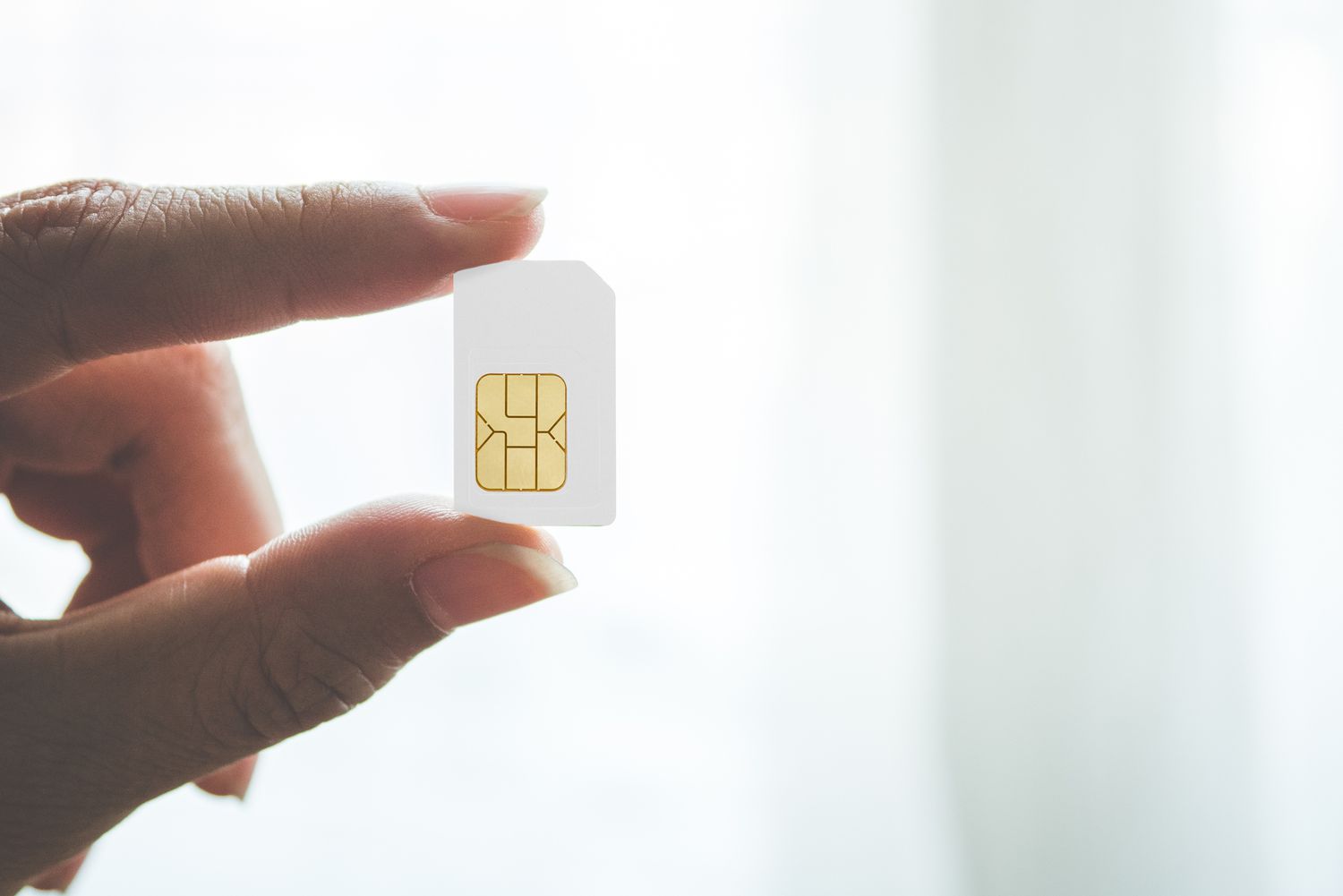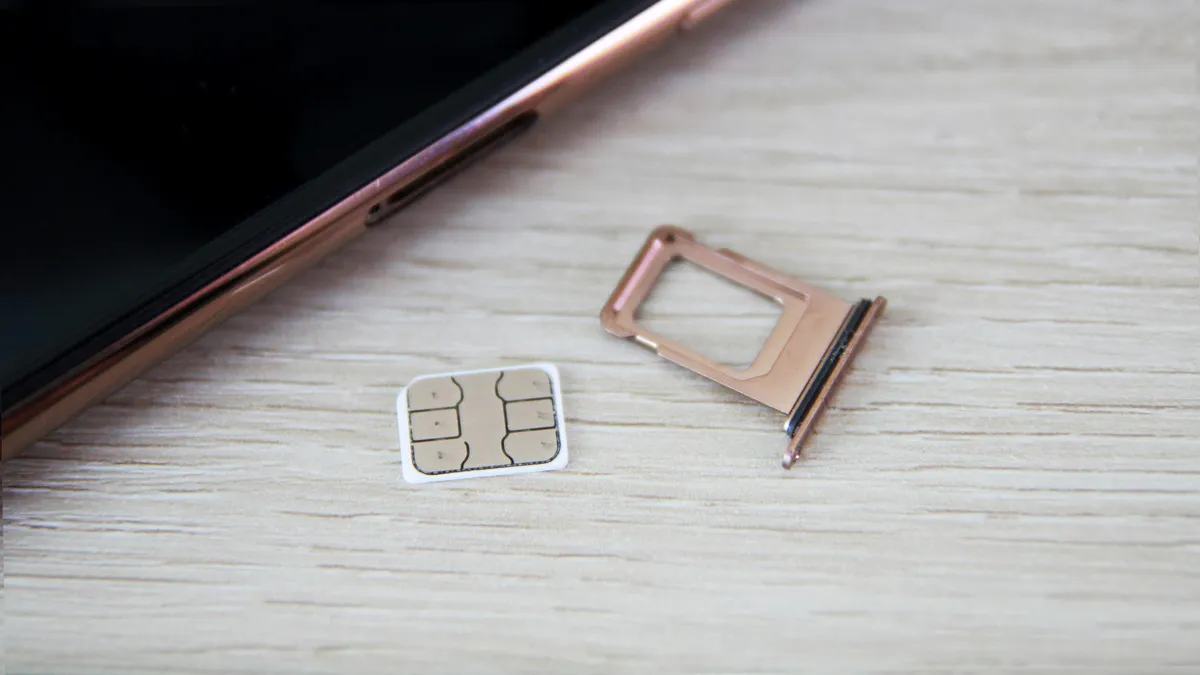Introduction
In today's interconnected world, mobile devices have become an indispensable part of our daily lives. Whether it's for staying in touch with loved ones, accessing information on the go, or conducting business, our smartphones and tablets have revolutionized the way we communicate and interact with the world around us.
At the heart of every mobile device lies a small but crucial component known as the Subscriber Identity Module (SIM) card. This tiny chip plays a pivotal role in enabling our devices to connect to cellular networks, allowing us to make calls, send messages, and access mobile data services.
Understanding the type of SIM card in your phone is essential, as it determines the compatibility with different networks and devices. With advancements in technology, there are now various types of SIM cards available, each designed to cater to specific requirements and device configurations.
Whether it's the traditional Mini SIM, the popular Micro SIM, or the more recent Nano SIM, knowing the type of SIM card your device uses can be beneficial when upgrading to a new phone or switching carriers. Additionally, as the industry continues to evolve, embedded SIM (eSIM) technology has emerged as a game-changer, offering a virtual SIM card solution integrated directly into the device.
In this comprehensive guide, we will delve into the intricacies of identifying the type of SIM card in your phone. We will explore different methods, including utilizing phone settings and physically inspecting the SIM card, to empower you with the knowledge needed to confidently navigate the world of SIM cards and mobile connectivity.
So, whether you're a tech enthusiast looking to understand the inner workings of your device or a casual user seeking clarity on SIM card types, this guide is tailored to equip you with the insights necessary to demystify the world of SIM cards and make informed decisions regarding your mobile connectivity needs.
Understanding the Different Types of SIM Cards
When it comes to SIM cards, it's essential to grasp the nuances of the different types available in the market. Over the years, SIM card technology has undergone significant transformations to accommodate the evolving landscape of mobile devices and user preferences. Understanding the distinctions between these various types is crucial for ensuring seamless compatibility and functionality with your device.
-
Mini SIM (Standard SIM): The Mini SIM, also known as the Standard SIM, was the first generation of SIM cards and was prevalent in early mobile devices. It measures 25mm x 15mm and is characterized by its larger form factor. While it's less commonly used in modern devices, some older models and specific IoT (Internet of Things) devices may still require this type of SIM card.
-
Micro SIM: As mobile devices became more compact, the need for smaller SIM cards arose, leading to the introduction of the Micro SIM. Measuring 15mm x 12mm, the Micro SIM gained popularity in devices such as early smartphones and tablets. While it's larger than the Nano SIM, it remains in use in certain devices and serves as a bridge between the larger Mini SIM and the more recent Nano SIM.
-
Nano SIM: With the relentless pursuit of miniaturization, the Nano SIM emerged as the smallest standard SIM card available. Measuring a mere 12.3mm x 8.8mm, the Nano SIM is the go-to choice for most modern smartphones, including popular models from various manufacturers. Its diminutive size allows for more internal space within devices, contributing to sleeker designs and enhanced functionality.
-
Embedded SIM (eSIM): The latest innovation in SIM card technology comes in the form of the embedded SIM, or eSIM. Unlike traditional SIM cards, the eSIM is integrated directly into the device's hardware, eliminating the need for a physical card. This virtual SIM solution offers unprecedented flexibility, allowing users to switch between carriers and activate mobile plans without the need to swap physical SIM cards. eSIM technology is steadily gaining momentum and is increasingly being adopted in a wide range of devices, including smartphones, tablets, and wearables.
By familiarizing yourself with the different types of SIM cards, you can make informed decisions when it comes to device compatibility, carrier selection, and future upgrades. Whether you're transitioning to a new smartphone or exploring mobile connectivity options, understanding the nuances of SIM card types empowers you to navigate the dynamic landscape of mobile technology with confidence.
Checking the Type of SIM Card in Your Phone
Determining the type of SIM card in your phone is a straightforward process that can be accomplished through various methods. Whether you're curious about the SIM card type in your current device or you're preparing to switch to a new phone, understanding how to identify the SIM card type is essential for ensuring seamless compatibility and functionality.
Identifying the SIM Card Type Using Phone Settings
One of the most convenient ways to check the type of SIM card in your phone is by accessing the device's settings. Depending on the operating system of your smartphone, the steps may vary slightly, but the general process remains consistent across most devices.
For Android devices, you can navigate to the "Settings" menu and look for the "About phone" or "About device" section. Within this section, there should be an option to view "SIM card status" or "SIM card information," which provides details about the inserted SIM card, including its type (e.g., Nano SIM, Micro SIM).
Similarly, iPhone users can access the SIM card information by going to "Settings," selecting "General," and then tapping on "About." Here, you can find the SIM card details, including the type of SIM card being used in the device.
Identifying the SIM Card Type Using Physical Inspection
If you prefer a hands-on approach, physically inspecting the SIM card can also reveal its type. Most SIM cards display markings or indicators that denote the card's size and type. For instance, a Nano SIM will typically have a cutout that aligns with its specific dimensions, while a Micro SIM may have a perforation to indicate its size. By examining the SIM card itself, you can often discern its type based on these visual cues.
In some cases, the packaging or documentation that accompanied your phone may also specify the type of SIM card included. This can be particularly helpful when setting up a new device or seeking information about the SIM card type without physically removing it from the phone.
By utilizing these methods, you can confidently determine the type of SIM card in your phone, empowering you to make informed decisions when it comes to device upgrades, carrier compatibility, and mobile connectivity options. Understanding the intricacies of SIM card types ensures that you can seamlessly navigate the dynamic landscape of mobile technology, optimizing your device's functionality and performance.
Identifying the SIM Card Type Using Phone Settings
Identifying the type of SIM card in your phone through the device's settings is a convenient and straightforward method. It allows you to access essential information about the inserted SIM card without the need to physically handle the card. This approach is particularly useful for individuals who prefer a digital means of obtaining details about their device's SIM card.
For Android users, the process typically involves navigating to the "Settings" menu, which can be accessed by tapping the gear-shaped icon in the app drawer or the notification shade. Once in the "Settings" menu, users can look for the "About phone" or "About device" section, which contains vital information about the device's hardware and software. Within this section, there is usually an option to view "SIM card status" or "SIM card information." By selecting this option, users can access detailed information about the inserted SIM card, including its type, such as Nano SIM or Micro SIM. This method provides a quick and efficient way to ascertain the type of SIM card in an Android device.
Similarly, iPhone users can identify the SIM card type by navigating to the "Settings" app, selecting "General," and then tapping on "About." Within the "About" section, users can find comprehensive details about the device, including the SIM card information. This includes the type of SIM card being used, allowing users to confirm whether their iPhone is equipped with a Nano SIM, Micro SIM, or another type.
By utilizing the phone settings to identify the SIM card type, users can gain valuable insights into their device's compatibility with various SIM card sizes and carriers. This knowledge is particularly beneficial when considering a device upgrade or when seeking to switch to a different mobile network. Armed with this information, users can make informed decisions regarding their mobile connectivity needs, ensuring that their device is equipped with the appropriate SIM card for optimal functionality and performance.
In essence, the ability to identify the SIM card type using phone settings empowers users to stay informed about their device's hardware configuration, enabling them to navigate the ever-evolving landscape of mobile technology with confidence and clarity.
Identifying the SIM Card Type Using Physical Inspection
When it comes to identifying the type of SIM card in your phone, a hands-on approach involving physical inspection can provide valuable insights. This method allows you to visually examine the SIM card itself, looking for specific indicators and markings that denote its size and type. By engaging in physical inspection, you can gain a deeper understanding of the SIM card's characteristics without solely relying on digital interfaces or settings menus.
Most SIM cards display distinct features that indicate their type and size. For instance, a Nano SIM, known for its diminutive dimensions, typically features a specific cutout that aligns with its smaller form factor. This cutout serves as a visual cue, allowing users to differentiate a Nano SIM from other larger variants. Similarly, a Micro SIM, while larger than a Nano SIM, may exhibit a perforation that signifies its size, providing a clear indication of its type.
Physically inspecting the SIM card can be accomplished by carefully removing it from the device, ensuring to follow the manufacturer's guidelines for safe handling. Once the SIM card is removed, you can closely examine its surface to identify any distinguishing marks or indicators that reveal its type. By paying attention to these visual cues, you can confidently determine whether the SIM card in question is a Nano SIM, Micro SIM, or another variant.
In some instances, the packaging or documentation that accompanied your phone may also contain pertinent details about the type of SIM card included. This information can serve as a valuable reference point, especially when setting up a new device or seeking to confirm the SIM card type without physically removing it from the phone. By cross-referencing the details found on the SIM card itself with the information provided in the documentation, you can corroborate the SIM card's type with confidence.
By leveraging physical inspection as a method for identifying the SIM card type, you gain a tactile understanding of the SIM card's characteristics, enhancing your overall familiarity with your device's hardware components. This hands-on approach provides a tangible connection to the technology within your device, enabling you to make informed decisions regarding device upgrades, carrier compatibility, and mobile connectivity options.
In essence, physical inspection offers a practical and informative means of identifying the type of SIM card in your phone, empowering you to navigate the dynamic landscape of mobile technology with confidence and clarity.
Conclusion
In the ever-evolving realm of mobile technology, understanding the type of SIM card in your phone is a fundamental aspect of ensuring seamless connectivity and device compatibility. This comprehensive guide has shed light on the intricacies of SIM card types, providing insights into the various iterations, from the traditional Mini SIM to the cutting-edge eSIM technology. By delving into the nuances of SIM card types, users are equipped with the knowledge needed to navigate the dynamic landscape of mobile connectivity with confidence and clarity.
The methods outlined for identifying the SIM card type, whether through phone settings or physical inspection, offer practical and accessible means for users to ascertain crucial details about their devices. By leveraging these approaches, individuals can make informed decisions when it comes to device upgrades, carrier compatibility, and mobile connectivity options. Whether it's through the digital interface of phone settings or the tactile exploration of the SIM card itself, users are empowered to gain a deeper understanding of their device's hardware configuration.
Furthermore, the emergence of eSIM technology represents a paradigm shift in the realm of SIM cards, offering unprecedented flexibility and convenience. As eSIM technology continues to gain traction and integration across a wide range of devices, users are presented with a virtual SIM solution that transcends the limitations of traditional physical cards. This innovation underscores the dynamic nature of mobile connectivity, paving the way for enhanced user experiences and streamlined access to mobile networks.
By embracing the insights provided in this guide, individuals are better positioned to navigate the complexities of SIM card types, fostering a deeper appreciation for the pivotal role these small yet essential components play in the functionality of their devices. Whether it's the pursuit of a sleeker device design with the Nano SIM or the seamless network switching facilitated by eSIM technology, understanding the nuances of SIM card types empowers users to make informed choices that align with their mobile connectivity needs.
In essence, the journey of identifying the type of SIM card in your phone transcends mere technicalities, offering a gateway to a deeper understanding of the intricate interplay between hardware, connectivity, and user experience. Armed with this knowledge, individuals can confidently embrace the evolving landscape of mobile technology, ensuring that their devices are equipped with the optimal SIM card solution for a seamless and enriching mobile experience.







